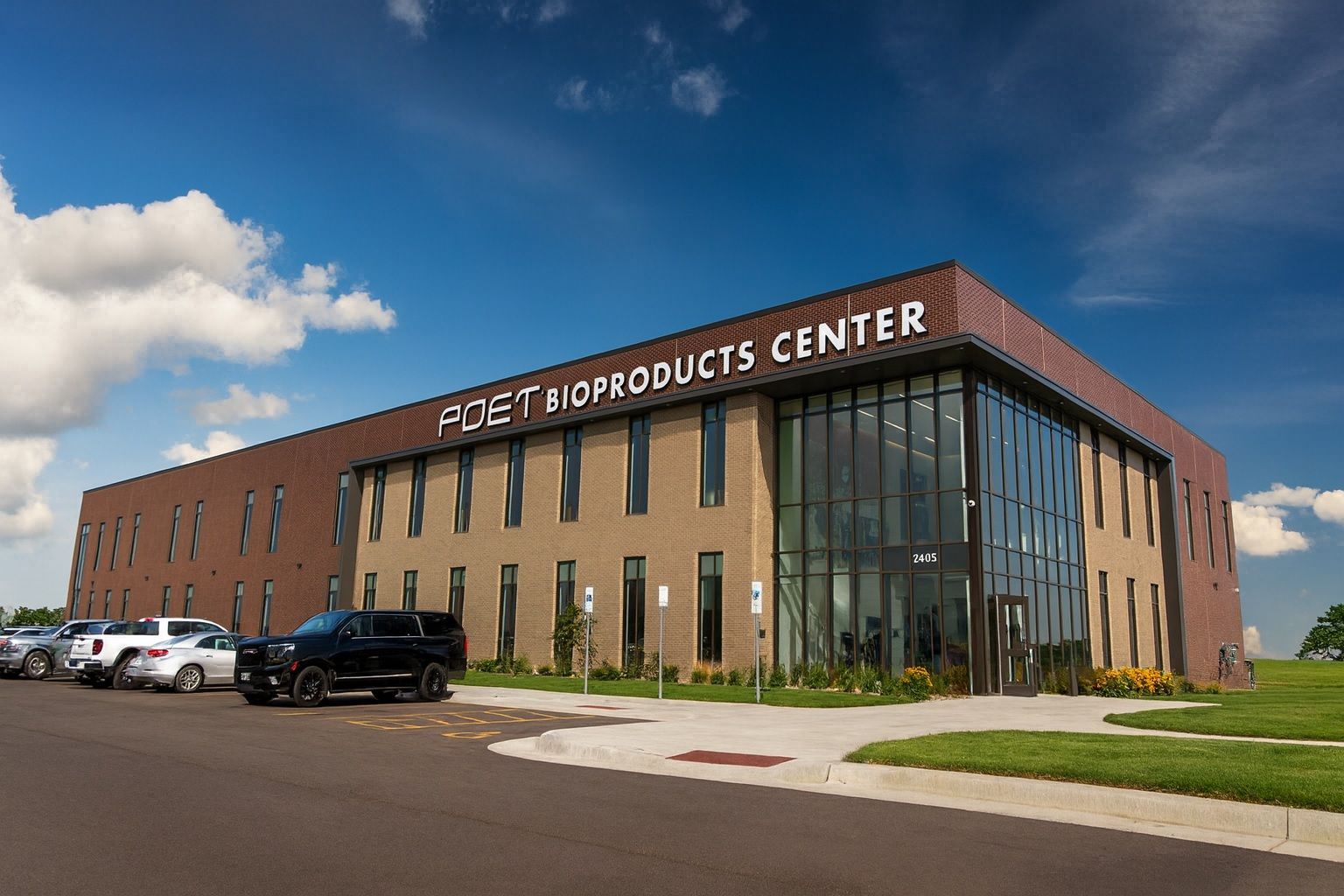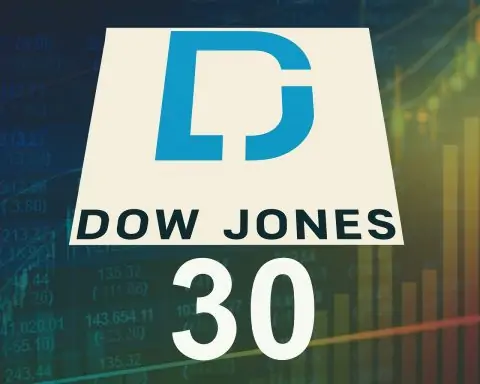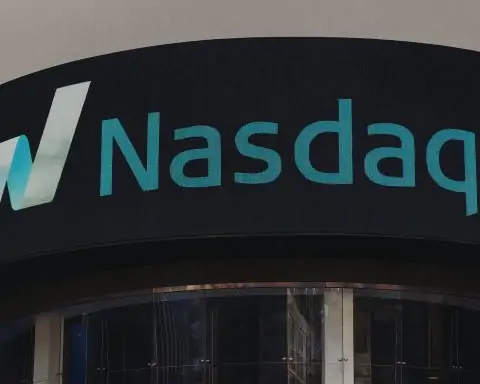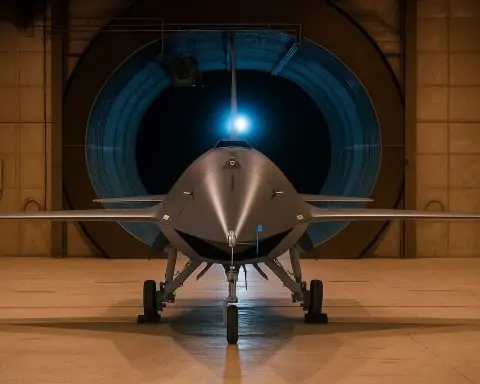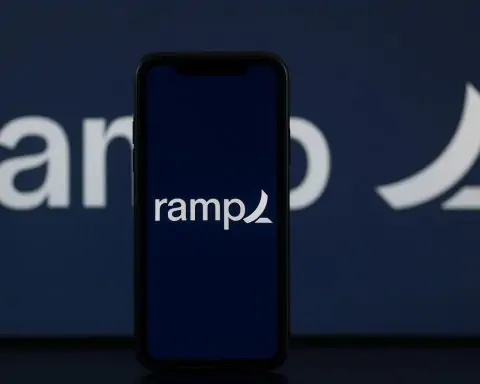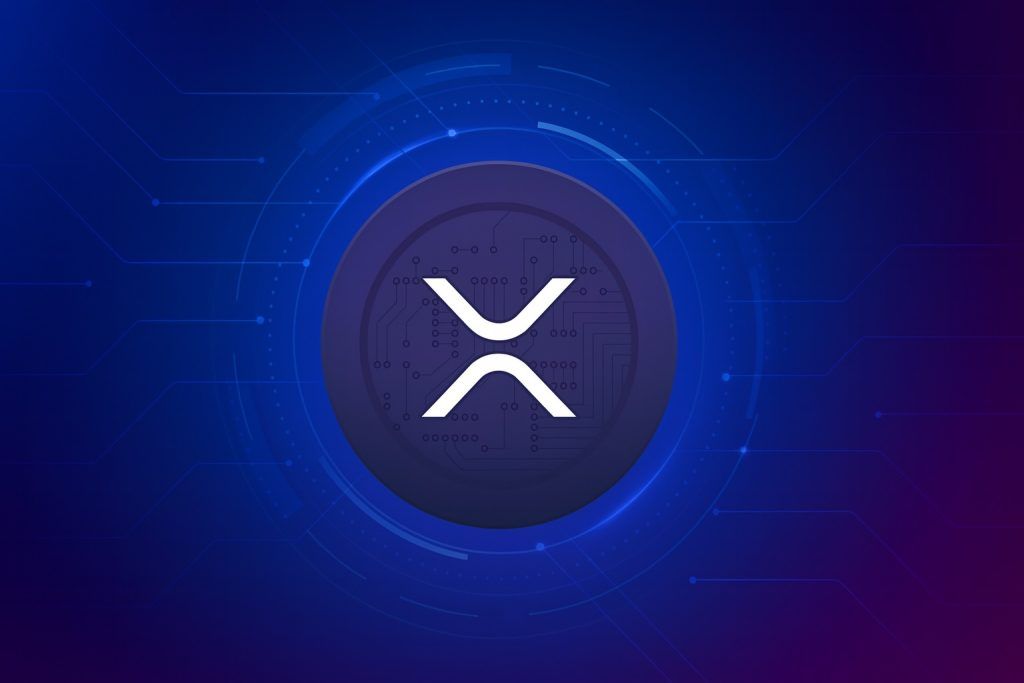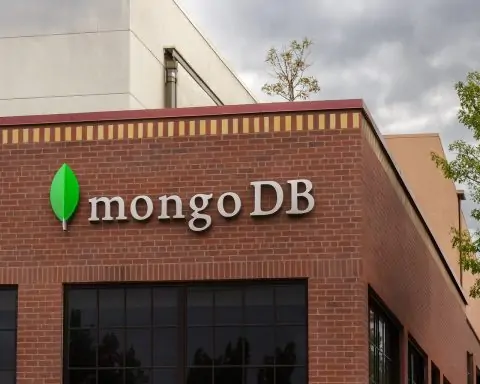- Record Funding: POET Technologies announced the closing of a US$75 million private placement on Oct. 7, 2025 – the largest investment in the company’s history – raised from a single (undisclosed) institutional investor [1]. The cash infusion will fuel corporate development, from targeted acquisitions and ramped-up R&D to expanding AI connectivity solutions [2].
- Optical Engine Innovator: The Toronto-based firm designs high-speed optical engines and light sources for AI systems and data centers using its patented Optical Interposer™ platform [3]. This photonic “chip-on-a-chip” integration enables ultra-fast, low-power data links that tackle AI’s data bottlenecks in ways copper interconnects cannot [4].
- Strategic Momentum: POET is leveraging the AI infrastructure boom with new products and partnerships. In late September it launched 1.6-terabit optical receiver modules (8×200G DR8 and 2×FR4) with Semtech for AI superclusters and cloud networks [5]. The same week, POET won the “Most Innovative Chip-Scale Optical Product” award at ECOC 2025 for its 200G/lane optical engines and 1.6T Teralight™ platform – the 7th industry award in 15 months for its AI/datacom tech [6].
- AI Connectivity Gold Rush: Exploding demand for next-gen AI networking underpins POET’s market. “We estimate that the AI optical connectivity opportunity has created over $50 Billion in market value to date,” says Northland analyst Tim Savageaux, who pegs the emerging external light source (ELS) segment at $1 B+ per year [7]. POET’s new tie-up with Sivers Semiconductors targets exactly that, combining Sivers’ high-power lasers with POET’s interposer to develop co-packaged optics for AI data centers – with prototypes expected in 2026 [8].
- Market Reaction: Investors greeted POET’s $75M windfall with euphoria. The stock surged to a one-year high, closing Oct. 7 at $7.88 (+23.5%) then jumping to $8.50 in after-hours trading (+7.9%) [9]. Volume spiked to 41 million shares (vs ~2.6M avg.) [10]. Call options volume exploded ~18× normal on Oct. 7, as traders snapped up bullish $10 strike calls (expiring 2026–27) – driving the put/call ratio down to an ultra-low 0.01 [11].
- Reality Check: Despite the excitement, POET remains pre-revenue and unprofitable. It logged a net profit margin near –11,500% (trailing) [12], reflecting tiny sales and heavy R&D losses, and its price-to-sales ratio ~1457 is astronomically high [13]. Wall Street is cautious: the sole recent analyst covering POET rates it “Hold” with a ~$6.50 target [14], awaiting proof that POET can convert its technological promise into revenue and market share.
$75 Million Infusion Fuels AI Connectivity Expansion
POET’s $75 million capital raise – a non-brokered private placement of ~13.64 million shares (with warrants) – marks a major vote of confidence in the company’s technology [15]. “This is the largest single investment in POET’s history,” noted CEO Dr. Suresh Venkatesan, adding it boosts POET’s balance sheet to $150 M+ cash and no debt [16] [17]. The deal was funded by a single institutional backer (whose identity was not disclosed), sparking speculation of a potential strategic partner behind the scenes [18].
With this hefty war chest, management plans to “scale up [POET’s] growth ambitions in the market for advanced AI hardware solutions”, Venkatesan said [19]. Specifically, POET will deploy the $75 M toward targeted acquisitions, aggressive R&D expansion, and manufacturing scale-up – all centered on its AI connectivity product lines [20]. In Venkatesan’s words, “the massive growth of AI infrastructure represents an unprecedented opportunity for which POET is well-prepared… With a war chest of over $150 million… we are now able to scale up our own growth ambitions” in AI datacenter hardware [21]. The investor also received warrants exercisable at C$9.78 (through 2030), implying confidence that POET’s share price could roughly double in coming years [22]. Bottom line: the infusion gives POET financial runway to pursue its roadmap “without the overhang of debt or near-term funding needs,” as one industry observer noted [23].
Optical Interconnects: POET’s Solution to AI’s Data Bottleneck
As AI models and cloud datasets explode in size, moving data between thousands of chips efficiently has become a critical bottleneck. Traditional copper connections inside servers struggle with bandwidth and power limits at these scales [24]. This is driving a shift to optical interconnects – using light (photons) instead of electrons – to carry data much faster and more efficiently. POET Technologies is at the forefront of this shift, with a unique approach to photonic integration. The company’s patented POET Optical Interposer™ platform allows it to integrate electronic and photonic devices into one monolithic chip [25]. In effect, POET can create tiny “optical engines” – chip-scale transceivers that send and receive data as light – with unprecedented integration and cost efficiency [26].
According to POET, its interposer-based optical modules are smaller, cheaper, and more power-efficient than conventional designs, and can be mass-produced using standard semiconductor processes [27]. These optical engines target the most demanding links in next-gen computing: on the order of 800 Gbps to 1.6 Tbps (terabits per second) between AI accelerators and across data centers [28]. For example, POET has developed novel light source modules for chip-to-chip communication within AI server racks [29] – essentially optical alternatives to short-reach copper cables, aimed at slashing latency and energy use. This capability is “the next frontier for solving bandwidth and latency problems in AI systems,” the company explains [30]. By embedding high-speed photonics at the chip and rack level, AI clusters can greatly increase throughput between GPUs/TPUs, preventing data bottlenecks that slow training of large models. Industry experts widely agree that optical connectivity is key to sustaining the AI boom, as even established players rush to upgrade their networks to 800G/1.6T speeds while reducing power per bit [31]. In this context, POET’s technology is timely – a convergence of photonics and AI where enormous market value is at stake [32].
Partnerships and Industry Momentum
POET isn’t just raising money in a vacuum – the company has been rapidly rolling out new products and forging alliances to capitalize on the surging demand for AI connectivity. In late September 2025, POET and Semtech Corp. jointly launched a 1.6 terabit-per-second optical receiver module for AI data centers [33]. The module, now sampling to customers, combines Semtech’s latest 200 Gbps-per-lane receiver ASICs with POET’s interposer in one compact package. It supports both 8×200G (1.6T) short-reach DR8 links (for within AI clusters) and 2×FR4 long-reach links (for between data center racks) [34]. The companies tout lower power consumption, high signal integrity at 200G/lane, and a reduced component count – all critical for next-gen AI networking. This Semtech partnership showcases how POET can collaborate with larger chipmakers to bring advanced optical engines to market quickly.
At nearly the same time, POET earned a prestigious accolade on the global stage. The company won the “Most Innovative Chip-Scale Packaging/Optical Sub-Assembly Product” award at the ECOC 2025 conference (Europe’s top optical comms event) [35]. The award recognized POET’s Optical Interposer platform and its 200G/lane engine technology, underscoring the industry’s appreciation for POET’s approach. Notably, this marked POET’s seventh industry award in 15 months [36] – a streak that highlights consistent innovation and helps bolster POET’s credibility in a field dominated by larger incumbents. Such recognition from independent experts and industry judges signals that POET’s solutions are seen as genuinely cutting-edge.
Another strategic move came via partnership with Sweden’s Sivers Semiconductors. On Sept. 29, POET and Sivers announced a collaboration to co-develop external light source (ELS) modules for co-packaged optics – an emerging technology for next-gen AI and networking hardware [37]. This effort will marry Sivers’ high-power distributed feedback (DFB) lasers with POET’s interposer platform to create laser modules that sit alongside switch or accelerator chips (i.e. “co-packaged”) in future AI systems [38]. The goal is to provide efficient, integrated laser light sources that can be produced at wafer-scale, addressing a critical challenge as AI clusters scale up. Analysts are bullish on this ELS market: Northland Capital’s Tim Savageaux estimates that co-packaged optics and external laser modules represent a $1 billion+ annual opportunity, forming part of a broader $50 billion AI optical connectivity market today [39]. The POET–Sivers team expects to demo early prototypes in H1 2026 and hit production by late 2026 [40], aligning with when many industry experts predict co-packaged optics will begin deployment. If successful, this partnership could position POET as a key supplier of the “laser engine” inside future AI switches and servers, complementing its transceiver products.
In summary, POET spent early fall 2025 aggressively expanding its footprint across the optical interconnect value chain – from ultra-fast receiver engines (Semtech deal) to high-power light sources (Sivers deal) – while garnering industry validation (ECOC award) along the way. The flurry of late-September announcements was no coincidence; it coincided with major photonics conferences (like ECOC in Europe and CIOE in Asia) where companies unveil breakthroughs. POET’s busy week of news helped stoke investor interest, and likely set the stage for the $75 M investment that followed by demonstrating that the company is executing on its vision.
Stock Soars as Investors Pile In
All these developments – the record funding and POET’s momentum in AI photonics – have unleashed fresh excitement in POET’s stock, though also some scrutiny. On news of the $75 M deal, POET’s NASDAQ-listed shares (POET) rocketed to their highest levels in years. The stock jumped 23.5% on Oct. 7 to close at $7.88, then climbed further to $8.50 in after-hours trading [41], notching roughly a 33% gain in a single day. This puts POET up about 77% year-over-year [42] (and nearly double its price of six months ago [43]), giving the company a market capitalization around $715 million [44]. Trading activity was frenzied: volume on Oct. 7 topped 41 million shares (versus ~2.7 M on an average day) [45].
Perhaps the clearest sign of speculative fervor came from the options market. On Oct. 7, traders bought up an estimated 73,000+ call options on POET – about 18× the normal volume – largely targeting $10 strike calls expiring in 2026 and 2027 [46]. Such out-of-the-money call buying indicates bets that POET’s stock (which was ~$5–6 before the news) could double or more in the next 1–2 years. The put/call ratio on POET plunged to 0.01 [47], meaning virtually all option activity was bullish. This kind of speculative surge often follows a catalytic event like POET’s funding announcement and product wins, as short-term traders anticipate that new cash and partnerships might drive the stock even higher. Indeed, social media buzz around POET spiked, with retail investor forums debating the “mystery investor” and the potential for a big strategic partnership.
High Hopes vs. Hard Realities
Amid the hype, financial analysts are urging caution. Despite its promising tech, POET Technologies remains in an early-stage, pre-commercial phase – essentially a pre-revenue company with very small sales to date. The company has operated at a loss for years as it develops its products. For perspective, POET’s net profit margin stands around –11,500% (trailing 12-month) [48] and its price-to-sales ratio is roughly 1457 [49]. These eye-popping figures reflect the same reality: POET’s current revenues are almost negligible, so by traditional metrics the stock’s valuation is extremely high. Such numbers are not unusual for a nascent tech hardware firm, but they underscore that POET must execute flawlessly – ramping production and winning customers – to justify investors’ optimism.
Wall Street’s outlook is accordingly measured. The consensus rating on POET is only a “Hold,” and the sole analyst price target is $6.50 [50] – essentially where the stock was trading before the latest spike. In other words, professional analysts see the stock as fairly valued for now, pending more evidence of commercial traction. TipRanks’ AI-based stock analyzer similarly notes POET’s poor financial performance and unattractive valuation, despite acknowledging the stock’s recent momentum [51]. There is also the question of the $75 M investor’s intent: if it turns out to be a strategic industry player (such as a large chip company or cloud provider), that could signal confidence beyond just cash. Conversely, if it’s a passive fund investment, POET will still need to prove itself through revenue growth.
Ultimately, the next 12–24 months will be pivotal for POET Technologies. The company now has over $150 million in the bank to scale up manufacturing, refine its optical engines, and court major customers in the AI/datacenter space [52]. Its technology has garnered critical acclaim and addresses a real pain point in AI infrastructure. The question is whether POET can transition from technology development to significant commercial wins. If POET’s optical interconnects start getting designed into AI training clusters or hyperscale data centers, the upside could be substantial. If not, the current valuation would be hard to sustain. For now, POET has bought itself time and resources to execute. As CEO Venkatesan emphasizes, the exploding AI hardware market is an “unprecedented opportunity” – now it’s up to POET to turn that opportunity into tangible results [53]. The market will be watching closely, with $75 million of new confidence – and a hefty dose of expectations – riding on this tiny optical chipmaker’s next moves.
Sources: POET press release [54] [55]; TipRanks News [56] [57]; ts2.tech (Tech Space 2.0) [58] [59]; Benzinga [60] [61]; Investing.com [62] [63]; Photonic Integrated Circuits Magazine [64].
References
1. ts2.tech, 2. ts2.tech, 3. ts2.tech, 4. ts2.tech, 5. ts2.tech, 6. ts2.tech, 7. ts2.tech, 8. ts2.tech, 9. www.benzinga.com, 10. www.benzinga.com, 11. ts2.tech, 12. ts2.tech, 13. ts2.tech, 14. ts2.tech, 15. ts2.tech, 16. ts2.tech, 17. ts2.tech, 18. ts2.tech, 19. www.benzinga.com, 20. ts2.tech, 21. www.benzinga.com, 22. ts2.tech, 23. ts2.tech, 24. ts2.tech, 25. www.tipranks.com, 26. ts2.tech, 27. ts2.tech, 28. ts2.tech, 29. ts2.tech, 30. ts2.tech, 31. ts2.tech, 32. ts2.tech, 33. ts2.tech, 34. ts2.tech, 35. ts2.tech, 36. ts2.tech, 37. ts2.tech, 38. ts2.tech, 39. ts2.tech, 40. ts2.tech, 41. www.benzinga.com, 42. www.benzinga.com, 43. www.investing.com, 44. www.benzinga.com, 45. www.benzinga.com, 46. ts2.tech, 47. ts2.tech, 48. ts2.tech, 49. ts2.tech, 50. ts2.tech, 51. www.tipranks.com, 52. ts2.tech, 53. www.benzinga.com, 54. stocktwits.com, 55. stocktwits.com, 56. www.tipranks.com, 57. www.tipranks.com, 58. ts2.tech, 59. ts2.tech, 60. www.benzinga.com, 61. www.benzinga.com, 62. www.investing.com, 63. www.investing.com, 64. picmagazine.net
